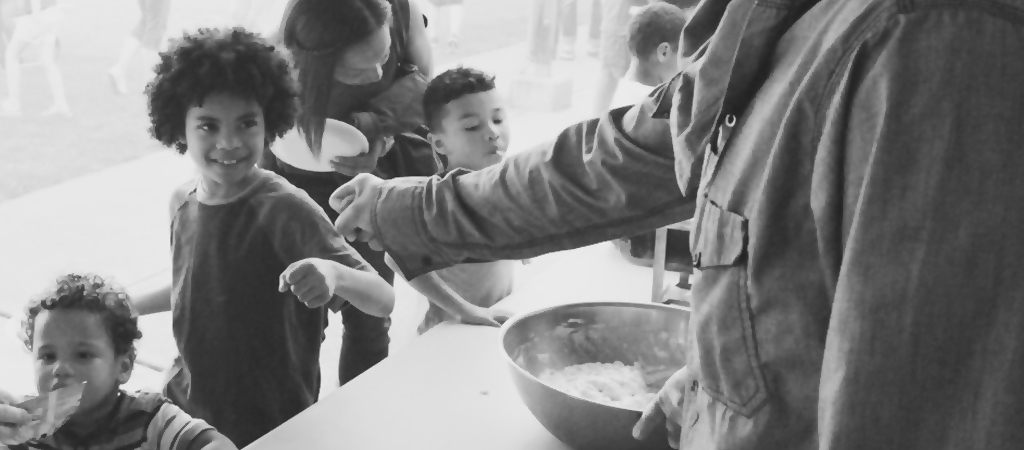We Gotta Pay Attention
It’s hard to pay attention to something (or someone) you’re not close to. Closeness invites attention.
God is the creator of all human beings, with all their differences, their colors, their races, their religions. Be attentive: Every time you draw nearer to your neighbor, you draw nearer to God. Be attentive: Every time you go farther from your neighbor, you go farther from God.
—Saint Dorotheos of Gaza
Wow.
This is particularly convicting in our day because we have become so damn gifted at villainizing the other side. Whether it’s the other political party, the other faith, the other quarterback, the other skin color, the other sexual orientation, the other…
It’s as if we’ve become so hyped-up on detailing all the reasons why the other is our enemy that we completely forgot Jesus’ command to love our enemies. And neighbors. And brothers. Everyone, really. The command is to love.
“Our life is love, and peace, and tenderness;
and bearing with one another, and forgiving one another, and not laying accusations one against another;
but praying one for another, and helping one another up with a tender hand.” —Isaac Pennington
We gotta pay attention.
Tom Berlin said, “Being church means moving from the fortified position of I’m always right to the vulnerability of loving God and neighbor.”
We gotta pay attention.
In order to pay attention, we must be close. And closeness will always equal vulnerability.
Jesus didn’t side with the power-players, gate-keepers, guardians, or protectors of the status-quo. He placed himself in solidarity with the least, the last, the lost. He sided with the overlooked, the forgotten, the marginalized, the scorned, the despised, the oppressed.
We gotta pay attention.
Every time we use religion to draw a line to keep people out, Jesus is with the people on the other side of that line. —Hugh Hollowell
We gotta pay attention.
Rich Villodas is the lead pastor of New Life Fellowship Church in Queens, NYC. The people of New Life come from over 75 different nations and live in one of the poorer neighborhoods in Central Queens. About a year and-a-half ago, he wrote an article for Christianity Today in the wake of the no-indictment verdict in the Michael Brown and Eric Garner cases. Here is just a portion of that article…
In seminary, a wise professor presented the real question we need to answer in order to break down racial barriers. He said,
When it comes to breaking barriers of race, the question isn’t “Can I be your brother in Christ?” Rather, the question is, “Can I be your brother in law?”
This question gets to the core of reconciliation. It’s one thing to be in close proximity to someone who looks different than you. It’s another to be in relationship with one different than you.
The former is what I call “aesthetic multiethnicity.” The quintessential image that captures this (at least in NYC) is the subway car. The subway car is a crowd of anonymous, diverse people in close proximity to each other. This image gives the impression that barriers are coming down, but it is all an illusion. The biblical image of reconciliation goes far beyond being a sanctified subway car to something much more beautiful—namely, a reconciled community.
In order to work toward a racially reconciled church community, we must first recognize that racism exists. Once we acknowledge this, as a church, we need to spend time learning and processing a theology of reconciliation. This means we must preach on it regularly as well as create space for dialogue in classes and other meetings.
But most importantly, we must learn to listen deeply to each other.
Douglas Steere said, “To listen to another’s soul may be almost the greatest service that any human being ever performs for another.” To become reconciled churches and communities, we need to learn to listen incarnationally. When we think of the word incarnation, we tend to immediately think of Christ coming and taking on human flesh for the purpose of our salvation. While that is true, the incarnation also serves as the framework for a flourishing world and, in this case, as a means of listening and conversing on the topic of race.
I’d like to submit three simple movements of incarnational listening:
1. Leave your world (leave what we are familiar with—risk, step out, especially in regards to race and culture.)
2. Enter into the world of someone else (through active, humble, and curious listening).
3. Allow yourself to be formed by another person and their worldview
In short, the incarnation describes not just Jesus’ ministry to us, but how we can listen to one another.
We gotta pay attention.
You can’t really understand a person’s beliefs and behavior until you know their story. Before judging someone, we’d do well to inquire about their story. In this way, the church should lead the way in storytelling and story-listening. —Rich Villodas


Yes! So much truth and goodness in this! Story-listening!